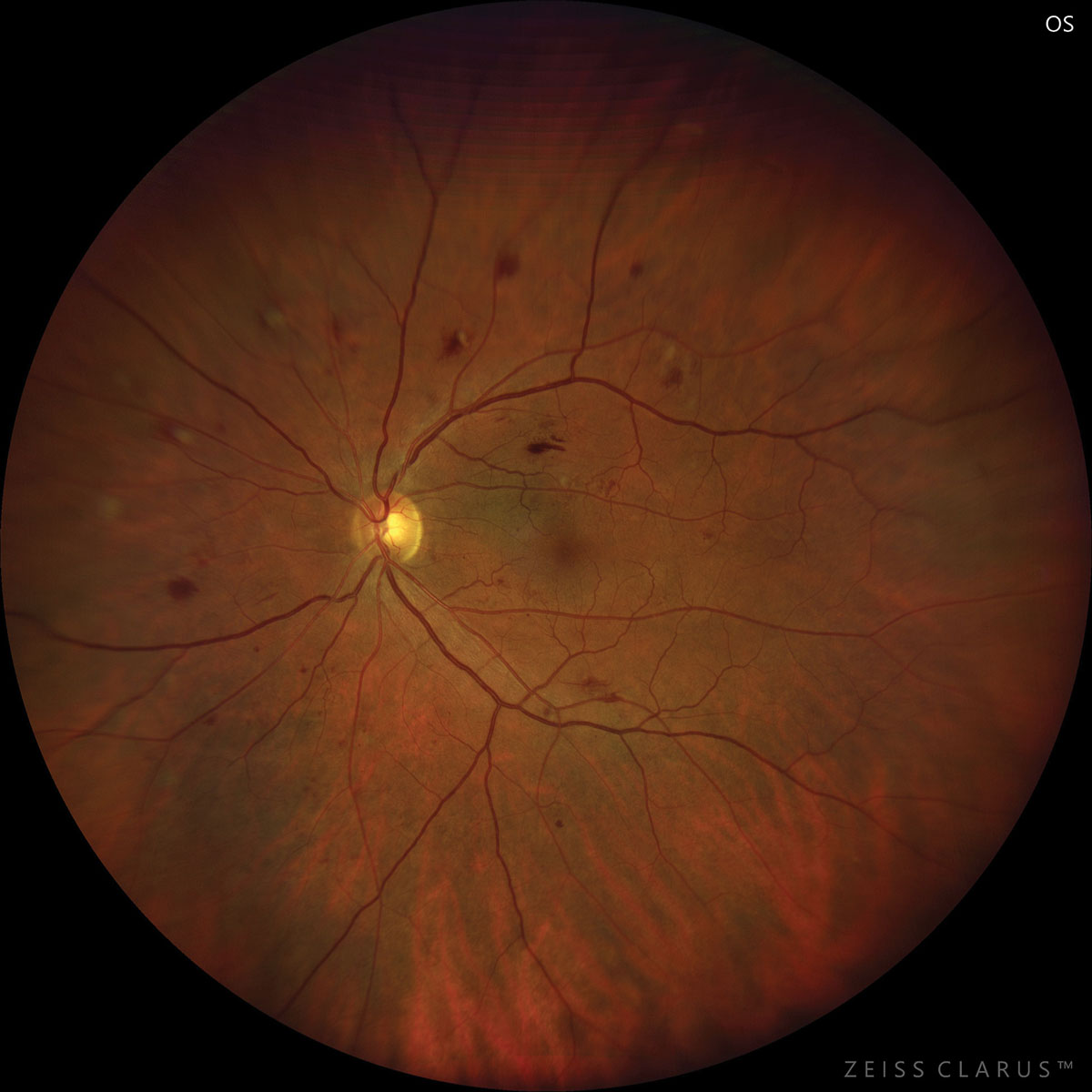 |
| It may be prudent to screen diabetic retinopathy patients for signs of depression, either formally with a survey instrument or just by being attuned to cues from the individual. Photo: Julie Torbit, OD. Click image to enlarge. |
Previous studies have found an association between diabetic retinopathy and depression, but didn’t use retinal imaging to determine DR severity, had small sample sizes of patients enrolled or lacked national representative data. In a new study just published in American Journal of Ophthalmology, researchers from Mt. Sinai School of Medicine in New York examined the relationship between diabetic retinopathy (DR) and depression in the United States in participants between the ages of 40 and 85 from the National Health and Nutrition Examination Survey (NHANES), a cross-sectional population-based study conducted annually with components assessing physical, mental and visual health.
Depression was most prevalent in moderate to severe NPDR, they found. To be exact, researchers identified a 7.1% prevalence of depression among all individuals with DR (any form). “Notably, there was a greater prevalence of depression in patients with moderate to severe NPDR (15.7%)” compared to those with no retinopathy or mild NPDR, the authors explained in their study. “There were also 2.5 times greater odds of depression among those with moderate to severe NPDR compared to those without retinopathy after adjustment for demographic factors.”
Subjects with mild NPDR showed a lower-than-average rate of depression, at 6.1%. “We were surprised that there were slightly lower odds of depression in those with mild NPDR compared to those without retinopathy when adjusting for covariates; however, this finding was ultimately not significant in our analysis.” Those with the proliferative form of diabetic retinopathy showed the lowest rate of depression—just 5%—but the authors excluded this group due to the small sample size from this cohort.
There was a disconnect between self-reported retinopathy and diagnosis by image grading, in which only 28.7% of those who self-reported no DR and 49.8% of those who self-reported the condition had these findings on retinal imaging. This highlights the need for more patient education regarding their eye disease, the authors noted.
They also found that those who self-report DR have a greater prevalence of depression (17%) compared to those who did not (9%), with similar findings for each class of DR found on retinal imaging (mild NPDR, moderate/severe NPDR and proliferative DR).
“Notably, this was true whether or not an individual has incorrect knowledge of their DR status. For example, even among those with no DR on retinal imaging those who incorrectly self-reported DR (21.9%) have greater rates of depression than those correctly reporting the absence of DR (10.3%) suggesting a psychosocial component of depression that accompanies DR,” the authors explained in the study.
The authors suggest that eye doctors, particularly retina specialists should be aware of the strong association between DR and the development of depression, as further education about the disease may reverse the initial increased rate of depression from the self-knowledge of a diagnosis, and actually reduce overall depression.
“There may be a role for a depression screening tool for certain higher risk patients, or a coordinated effort with primary care providers to alert them to this vulnerable population for diagnosis and management,” the authors suggested. “One avenue for future work includes screening patients with moderate or severe NPDR for depression, and assessing their compliance with optimal medical therapy. This may provide insight on how to prevent poor psychological outcomes and the progression of retinopathy.”
Valluru G, Costa A, Klawe J, et al. Depression in individuals with diabetic retinopathy in the US. Amer J Ophthalmol. July 6, 2023. [Epub ahead of print.] |

